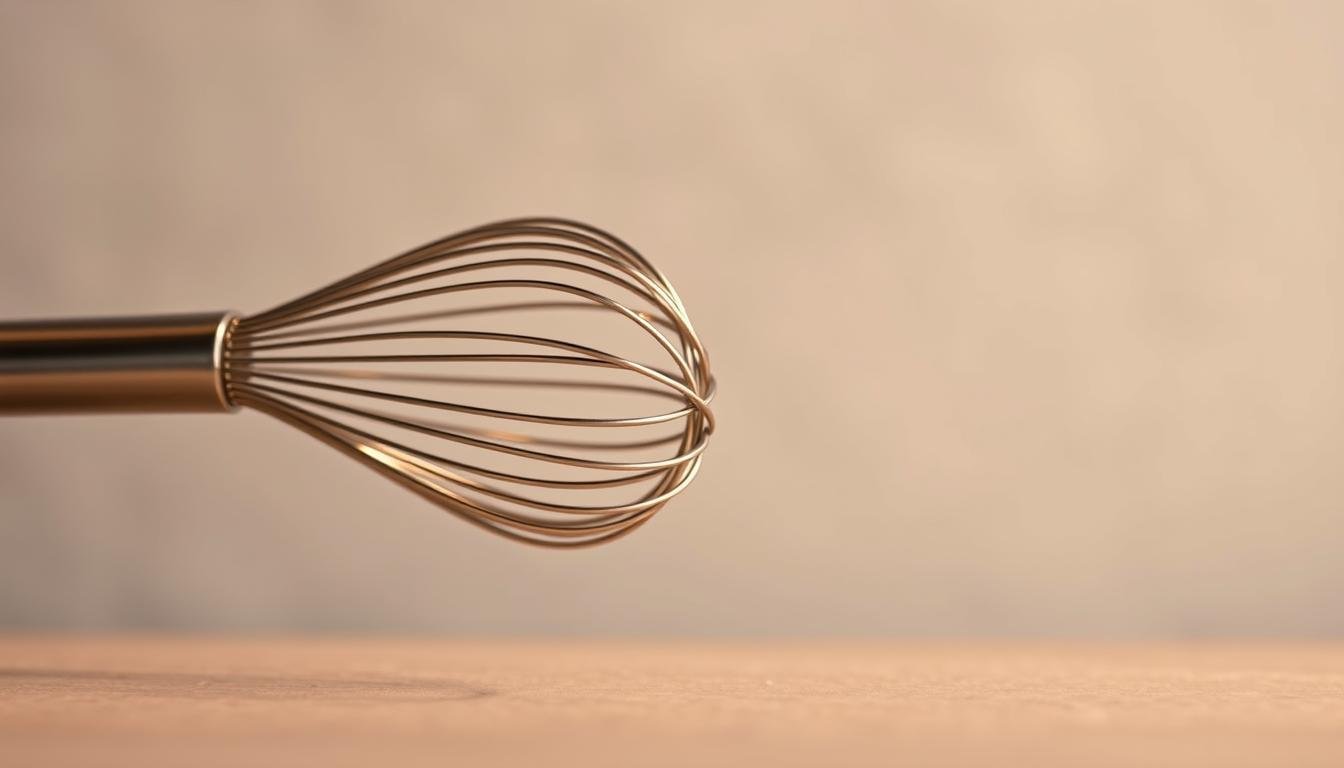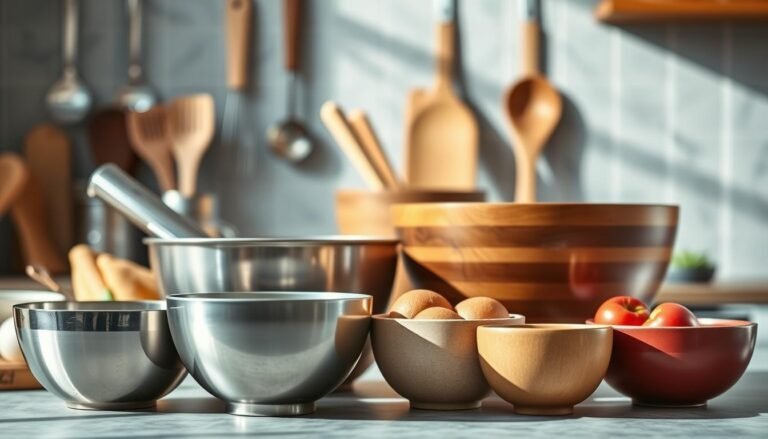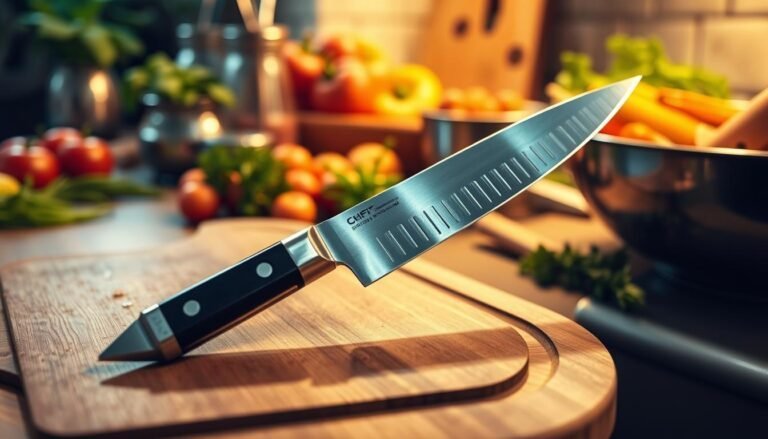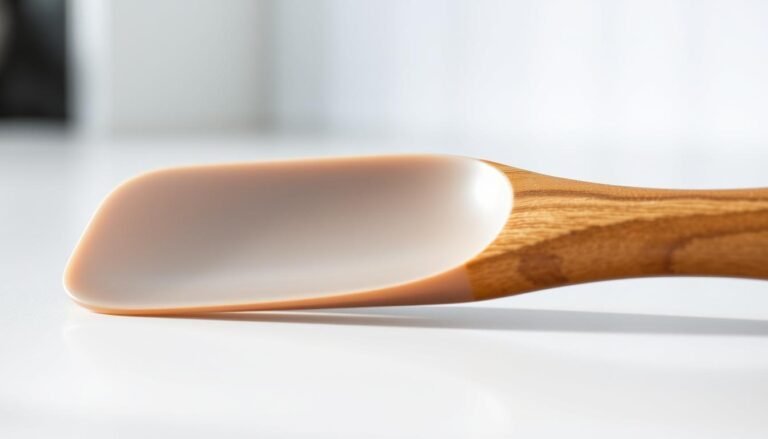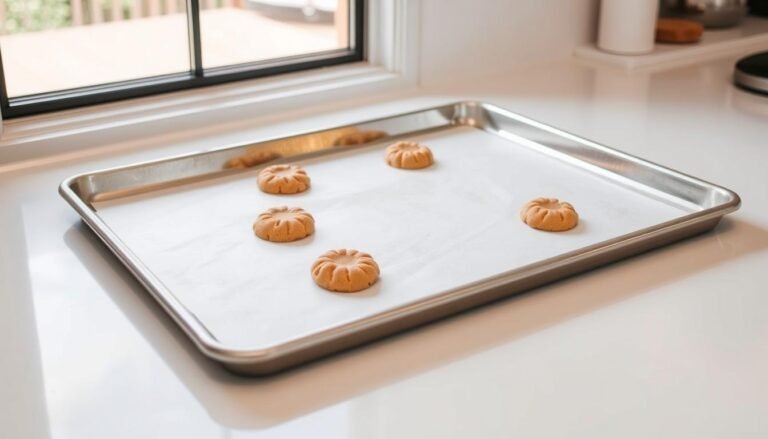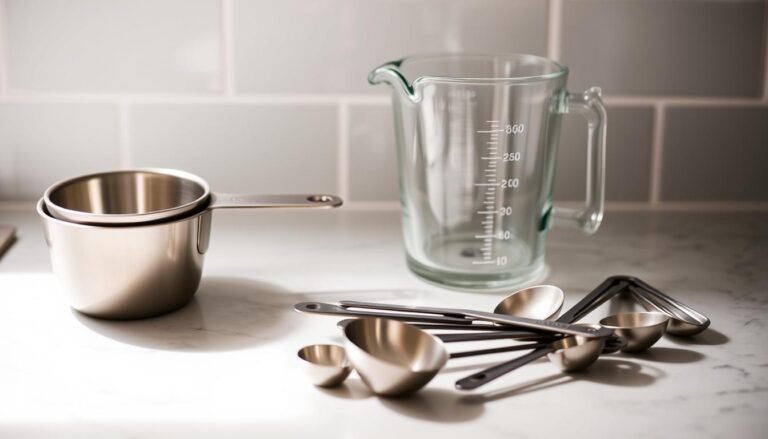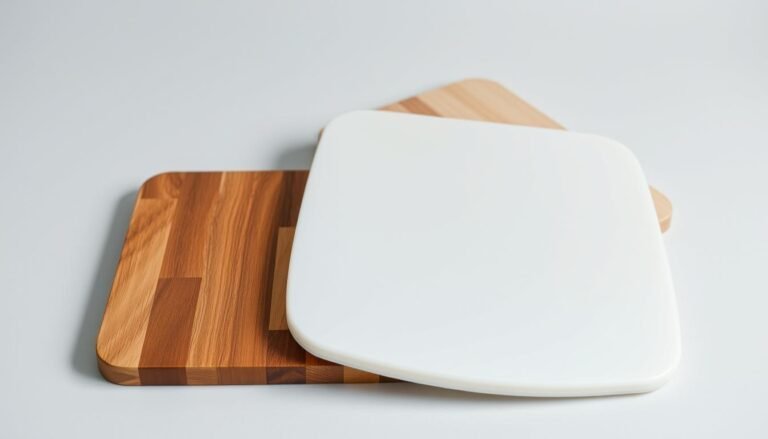Disclosure: This Post Contains Affiliate Links; We earn a commission on purchases.
In every kitchen, there’s a simple yet powerful tool: the kitchen whisk. This culinary tool is often ignored. Yet, it’s key to making many dishes.
A whisk does more than just stir. It unlocks your ingredients’ full flavor. It’s perfect for making meringues, beating eggs, or mixing sauces.
Key Takeaways
- The kitchen whisk is a fundamental tool in every kitchen.
- It simplifies various cooking tasks, from mixing to whipping.
- A whisk is essential for preparing a wide range of dishes.
- Its versatility makes it a valuable asset for home cooks and professionals alike.
- Using a whisk can significantly improve the quality of your cooking.
The Humble Whisk: An Underrated Kitchen Essential
The whisk is a quiet hero in the kitchen. It’s a simple, yet powerful cooking utensil. It’s key in making sauces, dressings, batters, and egg dishes.
What Makes a Whisk Special
A whisk is indispensable in cooking. Its design lets it mix and aerate ingredients well. It’s great for beating eggs or blending sauces, thanks to its flexible wires.
Historical Evolution of the Whisk
The history of whisk goes back centuries. Early whisks were made from twigs and branches. Now, they’re made from metal and silicone. Today, the whisk is a must-have in kitchens everywhere.
Types of Whisks and Their Specific Purposes
There are many types of whisks for different tasks in the kitchen. Knowing which whisk to use can make cooking better and faster.
Balloon Whisks
The balloon whisk is well-known for its bulbous shape and long wires. It’s great for mixing sauces, beating eggs, and blending in deep bowls. Its design helps mix and aerate well, making it useful in many recipes.
French Whisks
A French whisk, also called a balloon whisk, is slimmer than the usual balloon whisk. It’s best for sauces, soups, and other liquids where you need precise mixing. It’s a key tool in many professional kitchens for its accuracy.
Flat Whisks
Flat whisks are made for mixing in shallow pans. They’re perfect for scraping the sides of pans or folding ingredients. Their flat shape makes mixing easier in tight spaces.
Ball Whisks and Other Specialty Designs
Ball whisks have a ball-shaped head on a long handle. They’re great for mixing in jars or containers. Other whisks, like silicone ones for non-stick pans, offer solutions for different cooking tasks.
Knowing the different whisks and their uses helps both home cooks and chefs. It makes cooking better and improves the taste of dishes.
The Science Behind the Whisk: How It Works Its Magic
The whisk is simple but powerful. It changes mixtures through science. It works by adding air and mixing things that don’t usually go together.
Aeration and Emulsification Explained
Aeration means adding air to ingredients. Emulsification is mixing things that don’t mix well. The whisk is great at both.
Creating Volume in Egg Whites and Cream
Whisking egg whites or cream adds air. This makes them bigger and changes their feel. It’s key for making meringues, souffles, and whipped cream.
Binding Ingredients That Normally Separate
The whisk also mixes things like vinaigrettes or mayonnaise. It mixes oil and water together by whisking hard.
Why Hand Whisking Often Beats Electric Alternatives
Hand whisking gives you control and precision. Electric mixers can’t match this. It lets cooks adjust as they go, getting the right mix.
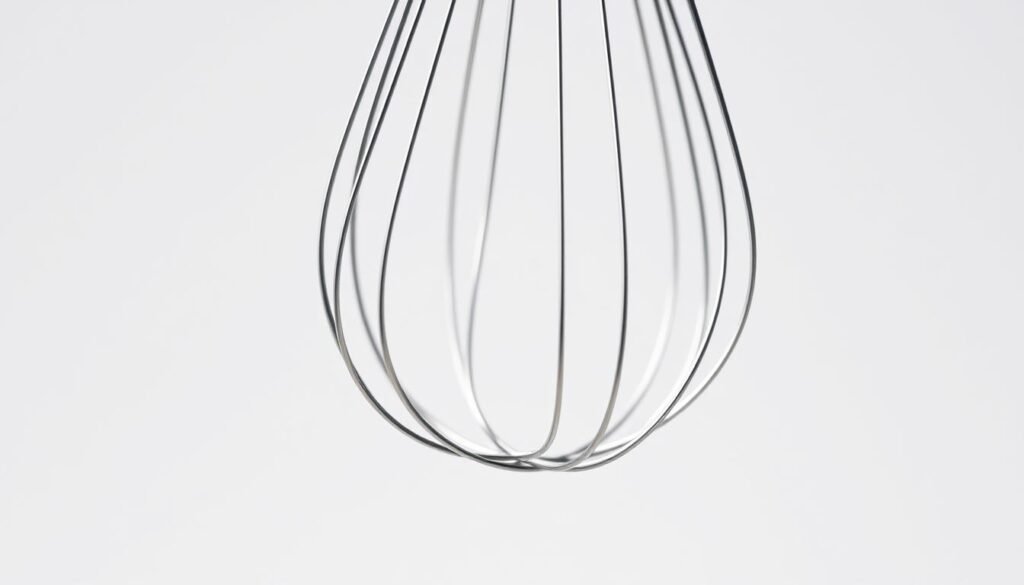
Essential Whisk Techniques Every Home Cook Should Master
Understanding whisking techniques is key to cooking well. Whisking is a basic skill that makes many dishes better. It’s used in sauces, dressings, batters, and desserts.
The Perfect Whisking Motion
The right whisking motion mixes wrist movement and arm strength. Whisk in a steady, rhythmic way to mix all ingredients well. Avoid jerky movements to prevent air bubbles and unmixed ingredients.
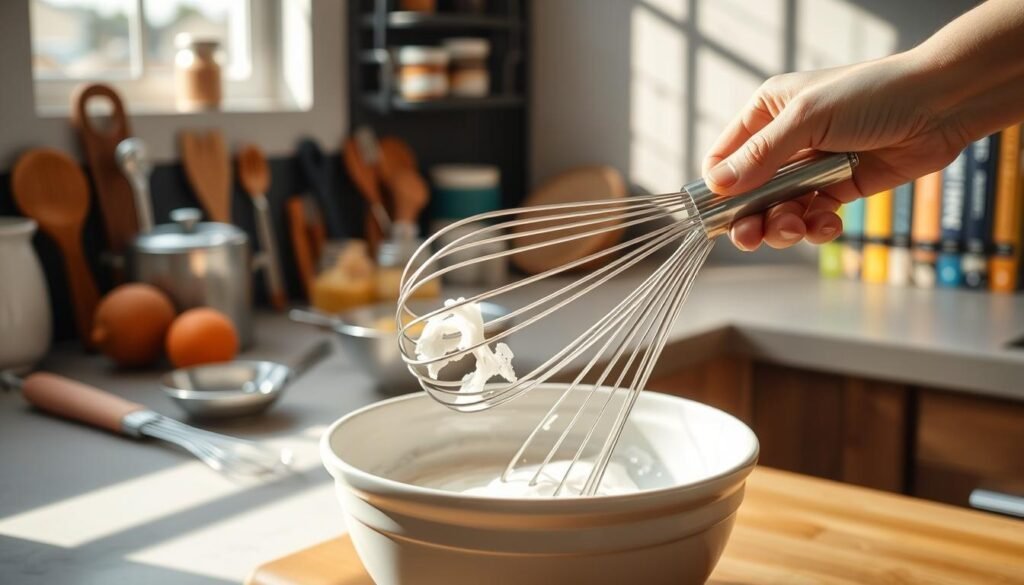
Speed and Timing Considerations
Speed and timing are important in whisking. For delicate sauces, use slow whisking. For egg whites or cream, whisk faster. Timing is key to avoid over-whisking and bad textures.
Common Whisking Mistakes to Avoid
Don’t over-whisk, under-whisk, or use the wrong whisk. Know what your recipe needs and adjust your whisking. Using the right whisk and paying attention to motion makes a big difference.
Mastering whisking techniques can greatly improve your cooking and baking. You’ll make dishes that look and taste like they were made by a pro.
Beyond Eggs and Cream: Unexpected Uses for Your Whisk
Whisks are not just for eggs and cream. They have many uses in the kitchen. This makes them a key tool for different cooking tasks.
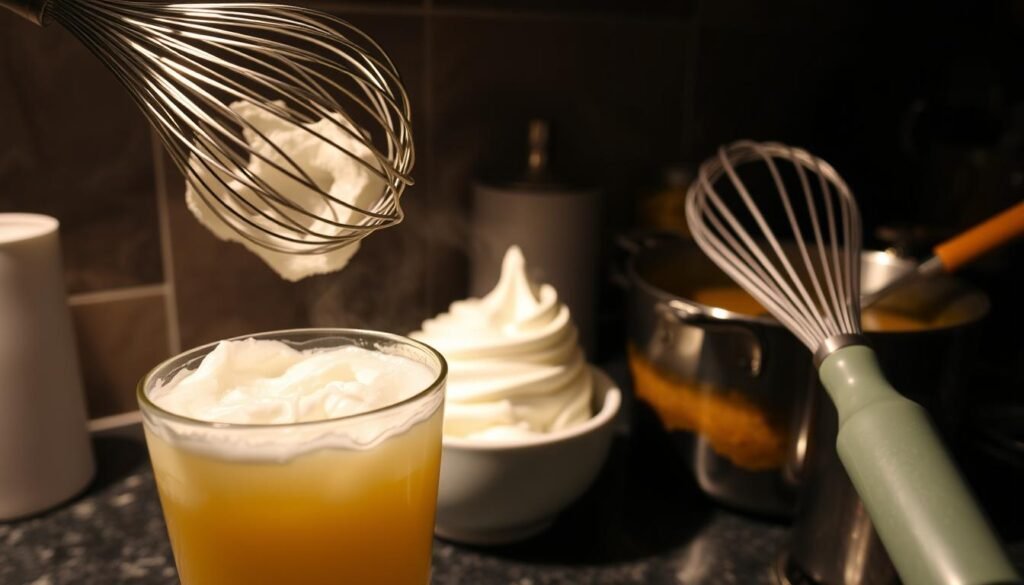
Sauces and Gravies Without Lumps
A whisk is key for sauces and gravies. It mixes ingredients well, avoiding lumps. This makes your sauces and gravies smooth.
Whether it’s a béarnaise sauce or a simple gravy, a whisk is essential. It helps get the right texture.
Perfect Pancake and Waffle Batters
For pancake and waffle batters, a whisk is the best choice. It mixes dry and wet ingredients well. This makes your pancakes fluffy and waffles crispy.
The whisk also makes the batter light. This is thanks to its ability to aerate the mix.
Cocktail Mixing and Other Beverage Applications
Whisks are also useful in the bar. They mix cocktails well, combining ingredients perfectly. A whisk can also froth milk for coffee or mix other drinks.
Choosing the Right Whisk for Your Kitchen
The world of whisks is vast. Finding the perfect one for your kitchen is key. With many materials, sizes, and designs, the right whisk can change your cooking.
Material Matters: Stainless Steel vs. Silicone
The whisk’s material is very important. Stainless steel whisks are tough and won’t rust, great for hard use. Silicone whisks are safe from heat, don’t stick, and are easy on pots and pans. Your choice depends on how you cook.
Size and Weight Considerations
The whisk’s size and weight matter a lot. Big whisks are good for large amounts, small ones for tiny sauces. A whisk that feels right in your hand makes mixing easier.
Budget Options vs. Professional-Grade Whisks
Your budget affects your whisk choice. Budget-friendly whisks are a good start, with good quality at a low price. But professional-grade whisks are built for lots of use. They have special features like comfy handles and last longer, worth it for serious cooks.
Think about these points to find the whisk that’s just right for you. It will make cooking better.
Professional Chefs and Their Favorite Whisk Secrets
In the world of professional cooking, the humble whisk is more than just a tool. Chefs use it in creative ways. They show home cooks how to get the most out of this simple tool.
How Professionals Use Whisks Differently
Professional chefs use whisks with finesse and speed. They’ve honed their skills over years. They whisk to emulsify sauces, aerate egg whites, or mix ingredients with precision.
Their technique and confidence set them apart. They know how to use the whisk to its fullest.
Chef-Recommended Whisk Brands and Models
Many chefs recommend certain whisk brands and models. They look for durability, balance, and performance. Brands like Mauviel and All-Clad are favorites for their quality.
For example, a chef might choose a balloon whisk for its versatility. Or a flat whisk for getting into corners of pans.
Conclusion: Why Every Kitchen Deserves a Quality Whisk
A quality whisk is more than a simple tool. It’s key to better cooking. It helps mix sauces, batters, eggs, and cream.
Getting a good whisk changes cooking a lot. It’s flexible and strong, helping you mix better. It’s great for both chefs and home cooks.
Knowing about different whisks helps you pick the best one. This makes cooking easier and more precise. A quality whisk is a must-have in your kitchen.
FAQ
What is the best material for a kitchen whisk?
What type of whisk is best for mixing sauces and gravies?
Can I use a whisk for mixing cocktails?
How do I clean my wire whisk?
What is the difference between a flat whisk and a balloon whisk?
Are electric whisks better than hand whisks?
What size whisk should I choose for my kitchen?
Can I use a silicone whisk for high-heat cooking?

From beginner-friendly tips to no-fuss dessert ideas, Ryan is all about helping people enjoy baking and treat-making without the stress. Whether you’re whipping up something for a party or just craving something sweet, Ryan’s practical approach makes it easy to create desserts that taste great and don’t take all day.
Subscribe to Our Newsletter

